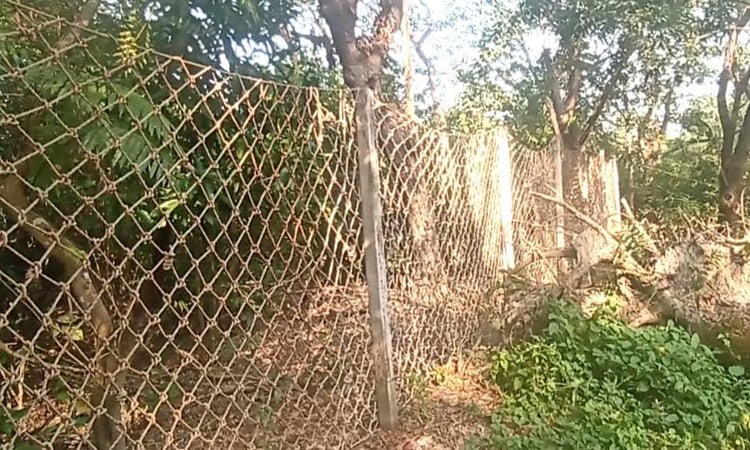News Flash
News Flash

By S M Zahid Hossain
KHULNA, Feb 12, 2025 (BSS) - The forest department started installing nylon fencing around the Sundarbans to tackle tiger-human conflicts in the neighbourhood areas.
The fear is disappearing from the minds of both the tourists and 30,000 people living villages adjacent to the Sundarbans as nylon fencing installation in 5 kilometers area and setting up of concrete pillars in 10 km areas has already been completed in the eastern Sundarbans.
The forest and environment ministry has taken a special project named "Sundarbans Tiger Conservation Project", aiming to reduce tiger-human conflicts, and increase the tiger population in the world's largest mangrove forest, project director office sources said.
Under the project, various activities were planned including a survey of the tigers and hunting animals in the Sundarbans, the construction of high dunes and watchtowers, research on canine distemper virus in tigers, and awareness training for Village Tiger Response Team (VTRT) and Community Petrol Group (CPG) members.
Project director office said the nylon fencing installation work began at different points under Sharonkhola and Chandpai Range of East Sundarbans with a cost of Taka 1.88 crore on August 2024.
In the first phase, out of 15 km length, nylon fencing installation in 5 km area has already been completed and 10 concrete pillars from Daser Varani Forest outpost to Nangli Dhansagar area has been set up.
Locals said the Bhola River in the eastern Sundarbans has been filled up and has now become a small canal.
At least 30,000 people live in the 20 villages including Gulishakhali, Amurbunia, Dhansagar, West Rajapur, Tograbari, North and South Rajapur and Sonatola located on the bank of the river.
Due to the filling up of the river, wild animals including tigers, come freely to the villages from Sundarbans at night and hunted buffaloes, cows and goats as wild boar destroys farmers' crops, locals said.
In the last 10 years, tigers have entered at least 50 times to different villages of Morelganj and Sharonkhola upazilas, adjacent to the forest, they said.
The villagers also said at least 5 tigers entered to the locality at different times in the previous years were lynched by the villagers.
Zahidul Howlader, Nur Islam and Hasina Begum, residents of North Rajapur village, told BSS that if the fencing is completed, wild animals will not be able to enter the locality.
Bipuleshwar Debnath, Station Officer of East Sundarbans of Chandpai Range, told BSS that on completion of the nylon fencing, the forest will be protected, and illegal entry of people to the forest will also be stopped.
He also urged the local people not to destroy the fencing for their greater interest.
Kazi Muhammad Nurul Karim, Divisional Forest Officer (DFO) of East Sundarbans Division and also the acting project director (PD) said the construction of nylon fencing has started in the forest border due to the people's demand to prevent entry of the wild animals including tigers and deer to the villages.
Nylon fencing will be done in phases in 60 kilometer areas of forest including Gulishakhali, Amburbunia, Dhansagar, Bogi and Charkhali, he said.
The forest department expressed hope that the successful implementation of this project will resolve tiger-human conflicts, reduce tiger killings by human, and increase the tiger population.
According to the project plan, 12 high dunes will be constructed inside the Sundarbans to offer shelter to tigers during floods, storms, and high tides.
A tower will also be installed in the Dhansagar area of the Sarankhola range tiger sanctuary to monitor fires. From this tower, forest guards and volunteers will be able to swiftly manage fires in the Sundarbans.